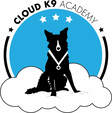When I say, I am a Force Free Trainer, many people think I am a tree hugger, hippie or that I am just too soft on the dogs. However, my methods are based in science versus intimidation. In the very simplest of terms, I use operant conditioning to get a dog to perform a certain behavior. In other words, the dog WANTS to perform the behavior. Operant conditioning is defined as a type of learning in which an individual's behavior is modified by its antecedents and consequences. With Force Free training, the antecedent is the cue and the consequence is either a reward (treat, toy, praise, etc.) or the withholding of a reward. The dog quickly learns that performing the behavior gets them something good.
B.F. Skinner is considered the father of positive reinforcement training. “Skinner showed how positive reinforcement worked by placing a hungry rat in his Skinner box. The box contained a lever in the side and as the rat moved about the box it would accidentally knock the lever. Immediately it did so a food pellet would drop into a container next to the lever. The rats quickly learned to go straight to the lever after a few times of being put in the box. The consequence of receiving food if they pressed the lever ensured that they would repeat the action again and again.” (Saul McLeod).
By using positive reinforcement of desired behaviors we are able to increase the frequency of that behavior. For example, if we want we the dog to walk at our side, we reward whenever it is by our side. We also withhold rewards when it is not by our side. The dog learns that if it stays by our side, it will get rewarded. Another example is the SIT behavior. SIT is a behavior dogs offer naturally. If we reward the dog for sitting it will start to offer the behavior more frequently in hopes of getting a reward. Once the dog is offering the sit reliably we can put a cue on it. You then have the SIT behavior on cue. By using positive reinforcement methods, dogs learn to offer behaviors. This allows us to train any behavior that a dog can physically perform.
On the flip side is punishment based methods. These methods use fear, pain and intimidation to make a dog perform a certain behavior. In other words, the dog is too afraid to do anything else. Many “Balanced Trainers” say that they use a combination of both reinforcement based training and punishment based training. They use positive reinforcement at the same time as using correction words and tools such as choke chains, prong collars or shock collars. While I understand the allure of those methods and the desire for quick results without a lot of work, I am here to tell you that they will cause more harm than good. I am not here to brow beat you and tell you that by using those methods you are being cruel to your animal. I am here to explain why those methods should not be used.
With aversive methods, dogs become afraid to offer behaviors. They are afraid if they offer the wrong behavior they will get punished. This makes it impossible to capture or shape behaviors, thus, stunting the learning process of the dog.
Many people will only punish once a dog learns a cue. However, if you use punishment in the proofing process you run the risk of poisoning the cue (creating a negative association). This will undo all the hard work you have already done.
In addition, as stated by the VCA Animal Hospitals, aversive methods have been proven to cause behavioral issues such as fear and aggression. Punishment based methods by definition create negative associations. For example, if you punish a dog for barking at another dog, you are creating a negative association of dogs. The more it happens the stronger that association becomes. Slowly but surely you create a dog that is afraid of other dogs. Even worse, over time, you can create a negative association with yourself. The better solution would be to reward the dog for being quiet in the presence of other dogs. This teaches the dog the appropriate behavior.
I will leave you with one last thought. Force Free Training creates a happy dog that willfully performs desired behaviors.
To learn more about Force Free Training contact Cloud K9 Academy

 RSS Feed
RSS Feed
